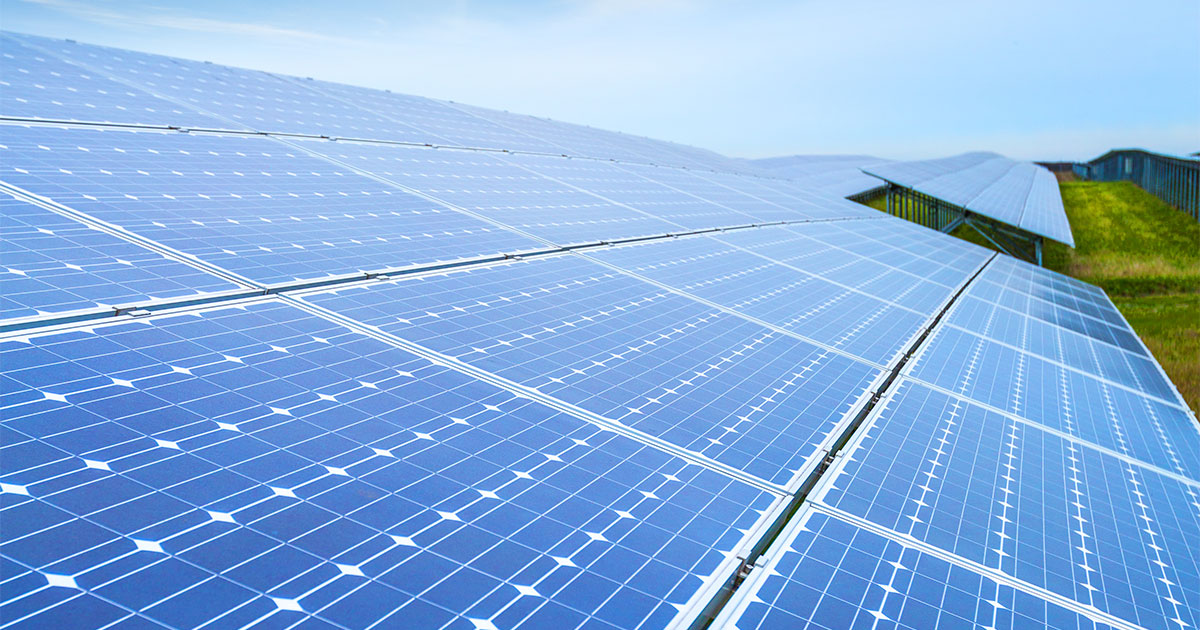
With the passage of recent federal legislation, the United States is undertaking an unprecedented effort to transition to clean energy, including solar power. This represents the first significant investment of federal resources toward combating climate change and building the sustainability of the nation’s electricity supply.
Ultimately, the success of this legislation will hinge on the ability to put these resources to good use. As discussed in this article, engaging local governments – the towns and villages where solar developments are often sited – can help bring these energy sources online quickly and efficiently.
This article provides an overview of Wisconsin’s solar-power-project approval process and discusses ways in which Wisconsin towns and villages can ensure that their viewpoints are considered, where local input can facilitate approvals, and how towns and villages can share in the benefits of these investments.
Adding Fuel to the Fire
The 2021 Infrastructure Investment and Jobs Act (IIJA) – commonly known as the Bipartisan Infrastructure Act – provides for a variety of infrastructure investments, including for construction of thousands of miles of transmission lines needed to transmit clean energy and to build electric vehicle charging stations.1
 Samuel W. Jack, George Washington Univ. Law School 2008, is of counsel at Dempsey Law Firm LLP, Fond du Lac, and represents towns and villages in all manner of legal issues, including solar developments and public contracting.
Samuel W. Jack, George Washington Univ. Law School 2008, is of counsel at Dempsey Law Firm LLP, Fond du Lac, and represents towns and villages in all manner of legal issues, including solar developments and public contracting.
 Alex R. Ackerman, Marquette 2016, is an associate at Dempsey Law Firm LLP and represents towns and villages on legal issues, including solar and wind developments.
Alex R. Ackerman, Marquette 2016, is an associate at Dempsey Law Firm LLP and represents towns and villages on legal issues, including solar and wind developments.
The authors wish to thank their colleagues, Matt Parmentier and Lee Turonie, for their review of the article and insights.
The IIJA’s companion legislation, the Inflation Reduction Act of 2022 (IRA), provides targeted funding to encourage clean energy developments such as solar-power and wind-power projects.2 This legislation – which was passed by Congress using the reconciliation process – builds on the IIJA’s investments in energy infrastructure and is the United States’ first actionable step toward meeting its Paris Climate Accord commitments.
The IRA provides nearly $370 billion to spur clean energy investments, primarily through tax credits and other incentives.3 The expansion of these tax credits is likely to lead to additional development of clean energy projects over the next several years, particularly wind power and solar power.4 Because many of the projects must begin construction by Jan. 1, 2025, to qualify for the tax credits, it is likely that local governments will begin seeing an uptick in proposals in the near term.
Large-Scale Solar-Power Developments in Wisconsin
For many municipalities in Wisconsin, the reality of alternative energy systems, such as large-scale solar-power developments, has arrived.
Typically, these systems require 8-10 acres of land per megawatt. As a result, solar developers look for a specific type of property: flat land that is close to a transmission line with available capacity and that is owned by a person who is willing to sell. In most cases, this means that a large-scale solar project will affect hundreds of acres of agricultural land, often within multiple municipalities.
Wisconsin is well suited to solar developments. Since 2018, at least 15 large-scale solar projects have been approved, and several other projects are under review.5 This will only intensify with the IIJA and IRA, as improved solar-power economics lead utilities and power providers to bring these investments online.
State Approval Process
State law gives priority to development and use of renewable energy sources, such as wind and solar. Wis. Stat. section 1.12(3)(b) provides that “[i]t is the goal of the state that, to the extent that it is cost effective and technically feasible, all new installed capacity for electric generation in the state be based on renewable energy resources.” As a result of this preference, the Public Service Commission of Wisconsin (PSC) takes an active role in construction of any electric generating facility with a capacity of 100 megawatts or more, which includes large-scale solar projects (sometimes colloquially known as “solar farms”).6
The 100-megawatt threshold is central to local governments’ planning because it determines whether the PSC’s exclusive jurisdiction over the approval of large-scale solar facilities will preempt a local government’s ability to regulate land use.7 Practically, this means that a solar development cannot be constructed without first obtaining the necessary approval – known as a certificate of public convenience and necessity (CPCN) – from the PSC.
In reviewing a proposed solar development, the PSC must make a range of determinations before granting a CPCN, including that the design and location of the facility are in the public interest. The public-interest determination must consider alternative sources of supply; alternative locations; individual hardships; and engineering, economic, safety, reliability, and environmental factors.
Pre-Application Consultation Process. The first of several steps to obtain a CPCN is a pre-application review involving the PSC and the Wisconsin Department of Natural Resources (DNR). Under Wis. Stat. section 30.025(1m) and Wis. Admin. Code section PSC 4.70(1), an applicant must meet with the PSC and the DNR before applying for a CPCN. This pre-application consultation process typically consists of a series of discussions with agency staff members.
CPCN Application. The applicant must provide information relating to ownership, general project location, project description, construction sequence and schedule, landowners affected, public outreach, municipal effects, environmental impacts, and waterway and wetland impacts.8 Within 30 days after the application is submitted, the PSC must notify the applicant that the application is complete or that there are deficiencies that must be addressed before the process can continue.
PSC Determination. The PSC assesses the CPCN application through a contested hearing process governed by Wis. Admin. Code chapter PSC 2. An administrative law judge will be assigned to the docket, decisions regarding intervention will be made, and the PSC will issue a scheduling order for hearings and testimony. The process will include a technical hearing, a public hearing, and written testimony submitted by the parties, as well as testimony from PSC staff. To grant a CPCN, the PSC must make all the following determinations:
The proposed facility satisfies the reasonable needs of the public.
The design and location are in the public interest.
The proposed facility will not unreasonably interfere with the orderly land use and development plans for the area involved.
The proposed facility will not have a material adverse impact on competition in the relevant wholesale electric service market.9
Members of the public are allowed to participate in the process by offering testimony and speaking at the public hearing. The PSC must make a final determination on the CPCN application within 180 days after submission unless an extension is granted.
A municipality has the right to intervene in PSC proceedings if the municipality can demonstrate that its substantial interests might be affected by the PSC’s decision.
Municipalities’ Involvement in the Approval Process
Wisconsin towns and villages seek to balance the economic opportunities of alternative-energy projects with their potential negative effects on local communities. Local government and community involvement is likely to intensify as federal incentives make clean energy projects more attractive to investors.
As outlined above, municipalities lack the authority to unilaterally block large-scale solar developments. If a CPCN is granted, the project will be able to proceed, even if there are conflicting local ordinances or community opposition. But a municipality need not remain on the sidelines while the PSC considers the application. A municipality has the right to intervene in PSC proceedings if the municipality can demonstrate that its substantial interests might be affected by the PSC’s decision. An intervenor has the same rights as a party to the PSC docket and, as an intervenor, a municipality can offer its own experts and testimony to achieve specific goals related to a proposed solar development.
Intervention is a costly option that requires a municipality to pay legal fees, retain experts, and incur other costs. However, municipalities might choose to intervene if elected officials and employees think that the PSC and CPCN will not adequately consider their concerns.10 Intervention can provide the municipality with important leverage in the process.
Joint Development Agreements. Alternatively, a municipality can negotiate a joint development agreement with the solar developer that can help address the municipality’s concerns. A joint development agreement is a voluntary agreement between the municipality and the solar developer to address local issues that were not addressed during the CPCN process. These agreements can be a less adversarial (and less costly) alternative to participating in the PSC approval process.
While not mandated by law, a joint development agreement can be a municipality’s best option to achieve specific goals related to the large-scale solar project and for the developer to garner local support. For example, a municipality might object to specific project details but not oppose a project as a whole. A joint development agreement can address a municipality’s concerns with setbacks, first-responder access, and decommissioning (including financial assurances to cover decommissioning costs).11
Springfield Solar Farm LLC and the town of Lomira entered into a joint development agreement regarding Springfield Solar Farm’s project in Dodge County.12 The agreement addresses concerns about annexation; interference with telecommunications signals; and noise, dust, glare, and the risk of fire created by the project. The agreement also requires the developer to list the town as an additional insured on its commercial general liability policy.
The agreement confirms Lomira’s entitlement to approximately $150,000 per year in utility shared-revenue payments, notwithstanding any future changes to law. Regardless of a municipality’s involvement with the PSC or CPCN application, municipalities within which large-scale solar facilities are located are eligible for these payments.13 In general, a qualifying large-scale solar development must contribute $4,000 per megawatt annually in utility aid. This amount is divided among the municipalities that host the facility based on the type of municipalities involved.14 These shared-revenue payments are typically far larger than the local property taxes – from which the solar development is exempt – that would otherwise be assessed to the property.
Local Regulation of Small-Scale Solar Energy Systems
Municipalities have additional options to regulate solar energy systems that are below the 100-megawatt threshold, although there are some limitations. Generally, a municipality can uniformly regulate the development of land through its zoning ordinances. However, Wis. Stat. section 66.0401 prohibits municipalities from placing any restrictions on a solar energy system (of any size) unless the restriction will do at least one of the following:
Preserve or protect the public health or safety;
Not significantly increase the cost of the system or significantly decrease its efficiency; or
Allow for an alternative system of comparable cost and efficiency.
As a practical matter, this means that municipalities can only regulate small-scale solar energy systems on a case-by-case basis.15
Although municipalities are limited in their ability to broadly regulate solar energy systems, local governments may establish a discretionary permitting process that is consistent with Wis. Stat. section 66.0401 to allow for case-by-case regulation of individual systems. Local governments should consider adopting ordinances that will allow them to provide input into the siting process for solar energy systems.16
Conclusion
The IIJA and the IRA likely will accelerate the development of solar-energy facilities in Wisconsin. Before any project can break ground, solar developers must navigate the web of legal requirements to put these funds to use. Local governments do not wield direct control over the approval process, but local opposition to large-scale solar developments can delay, if not entirely scuttle, such efforts, and local leaders will play an outsize role in the success of these initiatives. Bringing local governments to the table early can help to bring these resources online quickly.
Endnotes
1 See Infrastructure Investment and Jobs Act (Bipartisan Infrastructure Act), Pub. L. No. 117-58, Nov. 15, 2021, 135 Stat. 429.
2 Pub. L. No. 117-169, Aug. 16, 2022, 136 Stat. 1818.
3 See id., subtitle D, 136 Stat. 1906. The IRA also includes important incentives for local governments and other tax-exempt entities seeking to make their own investments in clean energy. Whereas these incentives were traditionally only available to taxpaying entities, that is, private energy developers, the IRA allows public power agencies to obtain cash payments from the IRS for certain clean-energy investments. The IRA also allows local governments to fully finance projects with tax-exempt bonds, while still receiving 85% of the tax credit. See id.,§ 13101, 136 Stat. 1912. These incentives will make these types of projects significantly more attractive to local governments, potentially “disrupting” the market for clean energy.
4 The IRA extends the existing 30% investment tax credit for solar developments, which was previously scheduled to phase down by 2023. See id., § 13102, 136 Stat. 1913-14. It also extends the production tax credit, which provides credits based on the amount of electricity produced, and creates two new tax credits, the clean electricity investment credit and the clean electricity production credit, which give incentives for new forms of clean energy. See id., § 13101, 136 Stat. 1906; Kevin Pearson & Michael Such, Inflation Reduction Act and Renewable Energy Development: Its Advantages and Limitations (Sept. 23, 2022), www.reuters.com/legal/legalindustry/inflation-reduction-act-renewable-energy-development-its-advantages-limitations-2022-09-23/.
5 See PSC of Wis.,Highlighted Commission Cases, https://psc.wi.gov/Pages/CommissionActions/HighlightedCases.aspx (last visited Feb. 2, 2023).
6 Wis. Stat. § 196.491(1)(g).
7 SeeEcker Bros. v. Calumet Cnty., 2009 WI App 112, ¶ 1, 321 Wis. 2d 51, 772 N.W.2d 240 (holding that Wis. Stat. section 66.0401(1m) provides evidence that Wisconsin Legislature favors alternative energy systems and disfavors wholesale local control of such systems).
8 See also Wis. Stat. § 196.491 (3)(a)1.
9 See Wis. Stat. § 196.491(3)(d)2.-8.
10 Even if a municipality chooses not to intervene, it can participate in the PSC process by submitting public comments.
11The PSC favors joint development agreements. The PSC filing requirements outline how joint development agreements can benefit municipalities in areas such as water, fire, emergency medical services, law enforcement, security measures, traffic control, road use, and other issues.
12 See generally Town of Lomira, Springfield Solar Project Information, https://www.townoflomira.gov/2771/pubsarts/?&public=1&pubid=45474&keywords=&orderby= (last visited Feb. 2, 2023).
13 Wis. Legis. Fiscal Bureau, Shared Revenue Program (County and Municipal Aid and Utility Aid), Informational Paper 18 (Jan. 2017), https://docs.legis.wisconsin.gov/misc/lfb/informational_papers/january_2017/0018_shared_revenue_program_informational_paper_18.pdf.
14 For instance, if the facility is located in a city or village, the city or village will receive approximately $2,333 per megawatt annually and the county where the facility is located will receive approximately $1,667. If the facility is located in a town, the town will receive $1,667 and the county will receive $2,333.
15 Ecker Bros, 2009 WI App 112, ¶ 20, 321 Wis. 2d 51 (“[T]he language of [Wis. Stat. section] 66.0401(1) indicates that political subdivisions must rely on the facts of an individual situation to make case-by-case restrictions.”).
16 Local governments may also consider adopting an ordinance per Wis. Stat. section 66.0403 to provide solar owners with access rights to the development.
» Cite this article: 96 Wis. Law. 14-18 (March 2023).
